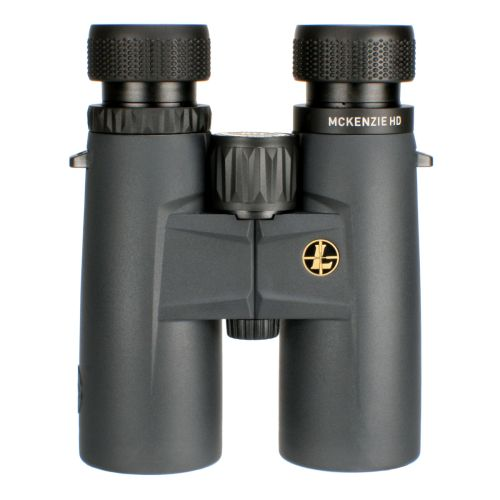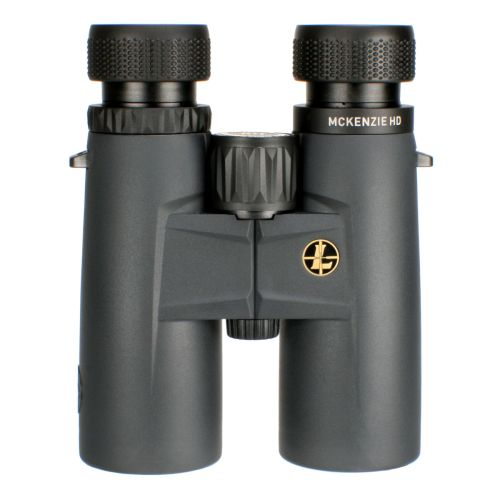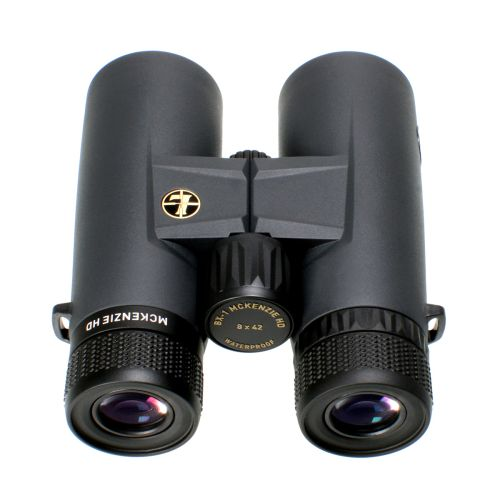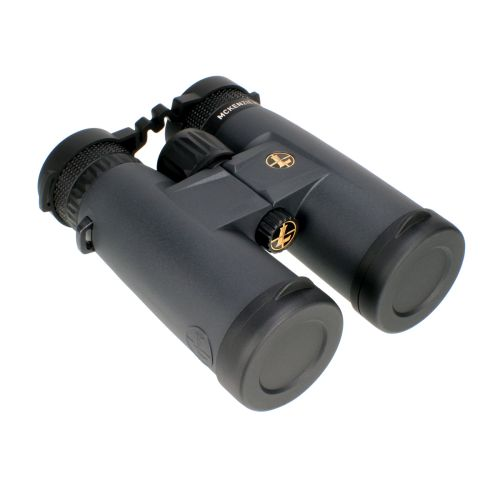

Leupold BX-1 McKenzie HD 10x42 Binoculars provide clear, bright visuals with a high-definition optical system. Featuring a BAK4 prism design, these binoculars minimize edge distortion, ensuring crisp image quality across the entire field of view. Weighing just 22 oz and measuring 5.6 inches in length, they are lightweight and compact, making them ideal for outdoor adventures like birdwatching, hiking, or hunting. The ergonomic design ensures comfortable handling, even during extended use.
Engineered to withstand the elements, these binoculars are both waterproof and fog-proof, thanks to Leupold's proprietary nitrogen sealing process. This means you can rely on them in various weather conditions without compromising performance. The central focus dial is large and tactile, allowing for quick adjustments, even while wearing gloves, making them user-friendly for any outdoor enthusiast.
Key Features:
- WATERPROOF & FOGPROOF for all-weather reliability, ensuring you can use them in any condition.
- BAK4 PRISMS enhance image clarity, providing a perfectly round exit pupil with minimal edge distortion.
- ERGONOMIC DESIGN fits comfortably in your hands, reducing fatigue during long observation periods.
- CENTRAL FOCUS DIAL enables quick adjustments, even with gloved hands, for precise focusing.
- NITROGEN FILLED to prevent internal fogging, allowing clear views in changing weather conditions.
- LIGHTWEIGHT at only 22 oz, making these binoculars easy to carry on any outdoor adventure.
- CLOSE FOCUS CAPABILITY of 9.8 ft allows for detailed observation of nearby subjects.
- HIGH DEFINITION OPTICS deliver vibrant colors and sharp contrast for an enhanced viewing experience.
Technical Specifications Table
| Magnification Type | 10X |
|---|---|
| Objective Lens Size | 42mm |
| Exit Pupil | 5.2mm |
| Eye Relief | 17mm |
| Field of View @ 1000 Yds | 320ft |
| Close Focus Distance | 9.8ft |
| Weight | 22 oz |
| Length | 5.6" |
| Weather Resistance | Waterproof & Fogproof |
| Exterior Finish | Shadow Gray |
What's in the Box?
- Leupold BX-1 McKenzie HD 10x42 Binoculars
- Lens covers
- Padded carrying case
- Neck strap
- User manual
Customer Reviews
"These binoculars are incredibly clear and lightweight. Perfect for birdwatching!"
"I took them on a hiking trip, and they performed flawlessly, even in the rain."
"Great value for the quality. The focus dial is easy to use with gloves!"
FAQ
What is the performance in low light conditions? The Leupold BX-1 McKenzie binoculars are designed to perform well in low light, thanks to their large objective lens size of 42mm. This allows for more light to enter the binoculars, enhancing visibility during dawn or dusk.
How do I maintain my binoculars? To maintain your binoculars, regularly clean the lenses with a soft microfiber cloth. Store them in a dry place and use the provided lens covers when not in use to prevent scratches and dust accumulation.
How do these compare to similar models? Compared to other models in its class, the BX-1 McKenzie offers superior optical quality with its BAK4 prism system and is built for durability with its waterproof and fog-proof design. It stands out for its ergonomic handling and lightweight construction, making it an excellent choice for outdoor enthusiasts.
Similar Models
Looking for more options? Explore our range of Leupold binoculars, including the BX-2 Alpine HD for enhanced optical performance and the BX-4 Pro Guide for a wider field of view. Check out our full collection to find the ideal binoculars for your outdoor adventures.
You May Also Like
Here’s some of our most similar products people are buying. Click to discover trending style.








